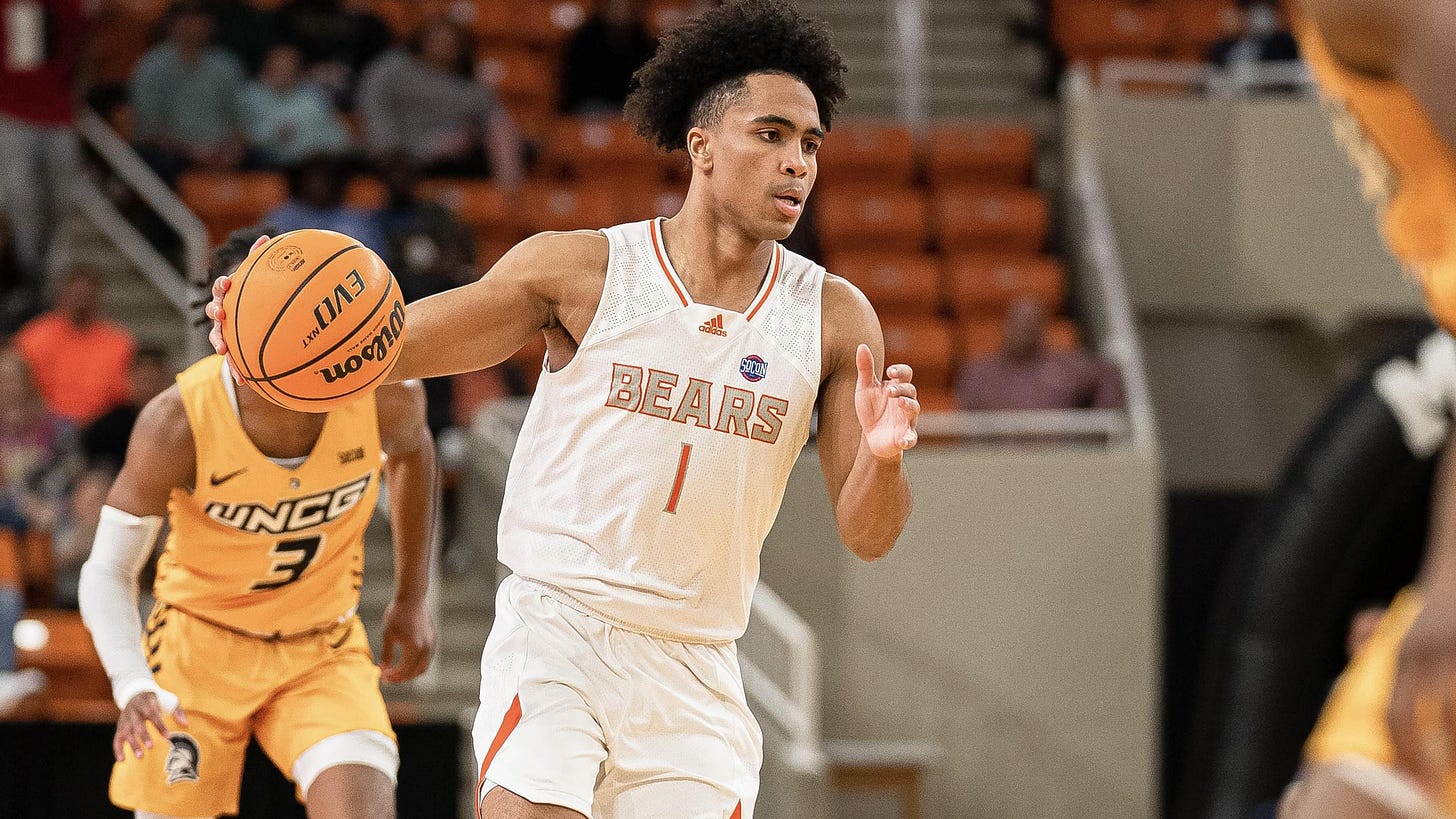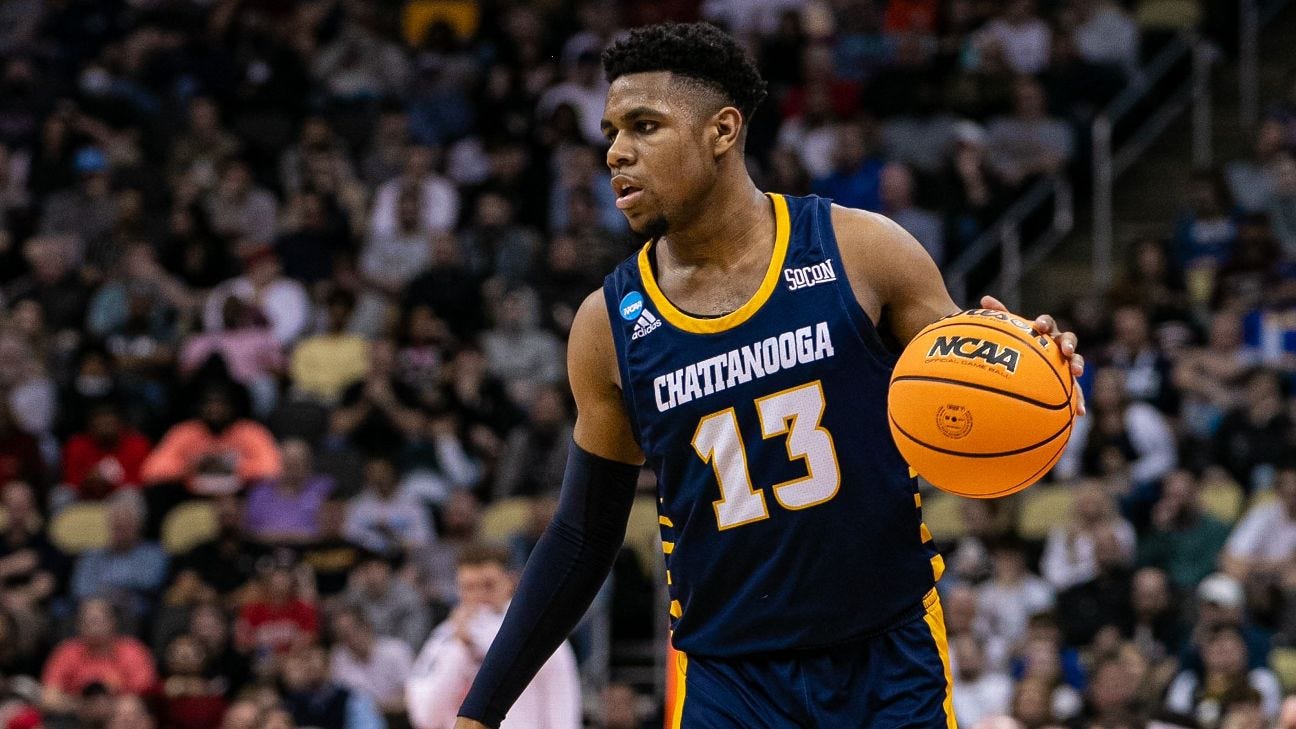The Future of Southern Conference Basketball Lies in the Transfer Portal
Whether you like it or not...
The transfer portal. The oh-so-controversial college basketball “free agency”. But whether you like it or not, the Southern Conference will live and die by the portal.
Welcome to the new normal of college hoops. The introduction of the one-time transfer rule shifted the landscape of college basketball and drastically changed the strategies for coaches and teams, especially for the mid-majors. Just one month into the portal opening this year, 1100 players entered looking for a new home. That’s 27% of Division I scholarship players, per On3. We’ve seen successful midmajors like Florida Atlantic fight off the portal, and others like San Diego State lose players but use it again for building their roster back. That is the reality of what the Southern Conference will be like, and it will make or break teams year after year.
Will It Break?
It’s a worry for many that the portal can crush smaller conferences, especially with the advent of NIL. The portal has made it much easier for high-performing players in the Southern Conference to be recruited away and join Power 5 teams.
Both Chattanooga and Furman lost two of their best players within the last three years, Malachi Smith and Noah Gurley. Smith, the 2022 SoCon Player of the Year, averaged 19.9 points, 6.7 rebounds, and 3 assists during the championship-winning campaign for Chattanooga. The recognition he gained made him a prime target for high-majors, and he eventually entered the portal and committed to Gonzaga. Noah Gurley was a three-time All-SoCon player during his time at Furman before transferring to Alabama. Both of these players were graduate transfers with multiple years of eligibility remaining. When the goal is to make the tournament, and maybe some NIL money in the process, who can blame them for taking advantage of their opportunities? Additionally, some midmajor schools in the conference do not offer graduate programs, making these grad-transfer situations very common. But aside from the graduating players, the free portal can cause non-graduate transfers to move on quicker than they may have if they outperform expectations.
Some recent examples of team-impacting transfers leaving the conference include Ty and Ledarrius Brewer, Jason Roche (Freshman of the Year), Ques Glover (14.7 ppg), Tyzhaun Claude (15.4 ppg), Jordan King (15.6 ppg), not to mention impact super seniors BJ Mack, Hayden Brown, and Stephen Clark. These were all impactful players with remaining eligibility, though again, not all schools offer the graduate degrees these players want or need. However, more important than single players leaving, the sheer number of players leaving the conference is incredible. 49 players exited their current teams while only 19 transfers came in. That’s 38% of scholarship players in the conference looking to change teams! The SoCon has lost two straight Freshmen of the Year to the portal as well.
“The SoCon is hemorrhaging to the portal right now…As of today, seven of the league’s top 10 scorers are either out of eligibility or aren’t returning to their SoCon program.” - SoCon John
ETSU (9 transfers), Mercer, Citadel, and VMI (7 transfers each), took the biggest hit of the portal. It seems like VMI lost nearly every impact freshman they were trying to build with, outside of Taeshaud Jackson (6 ppg, 7 RPG). But however dark the portal may make it seem, the Southern Conference teams could actually benefit from its opportunities.
Helpful Portal
As much as the portal takes away, the portal can provide. Notably Samford, ETSU, and Chattanooga have recently relied heavily on the portal to replenish their teams and even gain championship aspirations. Samford’s 2022-23 backcourt, Bubba Parham and Ques Glover, saw both playmakers transfer in and push their program forward. ETSU’s two highest scorers last year also both came from the portal at some point, Jordan King and Jalen Haynes. Last year, 8 of Chattanooga’s 15 players on their roster had previously been at a different school including their star, Jake Stephens, who transferred within the conference. Coaching changes can be attributed to some of this, but more than ever, well-established coaches are leaning into the portal as well.
As previously mentioned, Jalen Haynes is also part of a trend of Power 5 prospects who may not get the time they need at a higher level or have been underperforming, and move down to a midmajor to have a bigger impact. Other names like this include Carter Whitt (Furman), Carson McCorkle (Wofford), Austin Ash (The Citadel), and recent Samford commit Zach Loveday among others. Other players rise up the ranks to find the SoCon, like recent Furman commit, PJay Smith or Western Carolina star Vonterius Woolbright.
Can the portal be devastating to Southern Conference teams? Absolutely. But it is hard to say whether it will truly have a negative impact with the sheer number of players coaches can grab out of the portal to rebuild. It will take time to see if this amount of movement is sustainable.
In this college basketball world, transfers can be the lifeline to building successful programs. This cycle will only continue to grow as high-major, powerful NIL programs swipe players from midmajors, who rely on the portal to replace them. The Southern Conference teams need to become somewhere players want to transfer, not somewhere players want to leave. Eventually in that cycle, hopefully, the Conference can see a few more NCAA tournament wins and gain some more respect.
If you enjoyed the article, follow us on Twitter, Instagram, or subscribe to emails!






